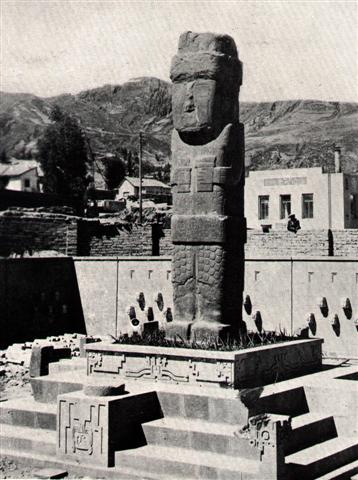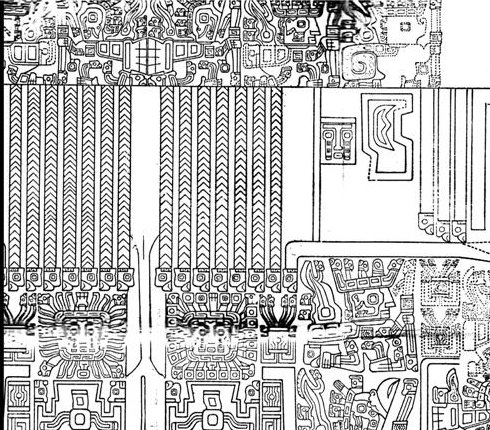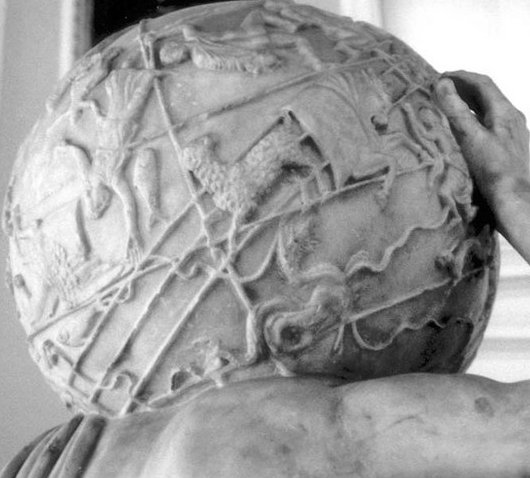93. The Chorti diviners had both the Sun year and a cycle with 260 days to consider: ... On February 9 the Chorti Ah K'in, 'diviners', begin the agricultural year. Both the 260-day cycle and the solar year are used in setting dates for religious and agricultural ceremonies, especially when those rituals fall at the same time in both calendars. The ceremony begins when the diviners go to a sacred spring where they choose five stones with the proper shape and color. These stones will mark the five positions of the sacred cosmogram created by the ritual ... Assuming this was the established ancient pattern it could help us in reading the tresses of Pacha-mama (Mother Earth): .. The ground, the food-giving earth, was Pachamama; the moon, Paximama ...
My guess is that Alcyone, the Queen of Sailing, was used for the 260-day cycle. For instance could Land have been counted as half 364 = 182 days and Sea as 182 + 32 = 214 nights. ... another Alcyone, daughter of Pleione, 'Queen of Sailing', by the oak-hero Atlas, was the mystical leader of the seven Pleiads. The heliacal rising of the Pleiads in May marked the beginning of the navigational year; their setting marked its end when (as Pliny notices in a passage about the halcyon) a remarkably cold North wind blows ... 214 (left side tresses) = 90 + 124 = 90 + 34 + 90. I think Atlas - who lifted the sky globe high - should have ruled Land and Alcyone the Sea.
... The first half [of the Phoenician alphabet] beginning with Alef - an ox, and ending with Lamed - a whip. The second list begins with Mem - water, and continues with Nun - fish, Samek - fish bones, Ayin - a water spring, Peh - the mouth of a well, Tsadi - to fish, Kof, Resh and Shin are the hook hole, hook head and hook teeth, known to exist from prehistoric times, and the Tav is the mark used to count the fish caught ... May 16 - the day when Alcyone, Pleione, and Atlas rose heliacally together - was day 136 counted from January 1, and from there to day 260 there were 124 days (as in the last 4 tresses of Pachamama). 124 / 4 = 31, and 396 - 124 = 272 = 2 * 136. In the G text 124 could have been a measure for the compressed henua (earth, land) calendar:
The precession since the time of the Bull would at the time of the Pope have caused a compression of 184 days to 184 - 60 = 124 days. The rays from the rising Sun came earlier and earlier among the stars, making them vanish. And eventually the place for 0h had moved so far as to be out in the Sea: ... This island was once a great land. The reason it became so small is because Uoke lifted the earth with a (mighty) pole and then let it sink (into the sea). It was because of the very bad people of Te Pito O Te Henua that Uoke lifted the land (and let it crumble) until it became very small. From the uplifted Te Pito O Te Henua, (they) came to the landing site of Nga Tavake, to Te Ohiro. In Rotomea (near Mataveri) they disembarked and climbed up to stay at Vai Marama (a waterplace near Mataveri). During the next month, they moved on to Te Vare (on the slope of the crater Rano Kau). When they saw that the (land-) lifting Uoke also approached (their present) island, Nga Tavake spoke to Te Ohiro: 'The land is sinking into the sea and we are lost!' But Te Ohiro warded off the danger with a magic chant. In Puku Puhipuhi, Uoke's pole broke, and, in this way, at least Nga Tavake's landing site remained (of the formerly great land) ... It became a pillar to fish by. Side a on the C tablet ends at Polaris (*26), which preceded Hamal, the Leader (Prince etc) with 4 days:
... It also was Anuv, and had its constellation's titles I-ku and I-ku-u, - by abbreviation Ku, - the Prince, or the Leading One, the Ram that led the heavenly flock, some of íts titles at a different date being applied to Capella of Auriga. Brown associates it with Aloros, the first of the ten mythical kings of Akkad anterior to the Deluge, the duration of whose reigns proportionately coincided with the distances apart of the ten chief ecliptic stars beginning with Hamal, and he deduces from this kingly title the Assyrian Ailuv, and hence the Hebrew Ayil; the other stars corresponding to the other mythical kings being Alcyone, Aldebaran, Pollux, Regulus, Spica, Antares, Algenib, Deneb Algedi, and Scheat ... However, the distance from Aldebaran to Antares was currently 181 days, and 181 - 124 = 57 (= 3 * 19), which measure coincided with the distance from Alcyone (*56) to Castor (*113).
In the C text we have perceived the Foundation Stone (Babylonian Temennu) at Cb2-6 and in line Cb1 there are 24 glyphs (posssibly alluding to 1-24 = 124):
Though it could perhaps be more reasonable to here look at the face of the Full Moon than at the heliacal dates: ... Pliny, who carefully describes the halcyon's alleged nest - apparently the zoöphyte called halcyoneum by Linnaeus - reports that the halcyon is rarely seen and then only at the winter and summer solstices and at the setting of the Pleiades. This proves her to have originally been a manifestation of the Moon-goddess who was worshipped at the two solstices as the Goddess of alternatively Life-in-Death and Death-in-Life - and who early in November, when the Pleiades set, sent the sacred king his summons to death ... ... in the ceremonial course of the coming year, the king is symbolically transposed toward the Lono pole of Hawaiian divinity ... It need only be noticed that the renewal of kingship at the climax of the Makahiki coincides with the rebirth of nature. For in the ideal ritual calendar, the kali'i battle follows the autumnal appearance of the Pleiades, by thirty-three days - thus precisely, in the late eighteenth century, 21 December, the winter solstice. The king returns to power with the sun. Whereas, over the next two days, Lono plays the part of the sacrifice. The Makahiki effigy is dismantled and hidden away in a rite watched over by the king's 'living god', Kahoali'i or 'The-Companion-of-the-King', the one who is also known as 'Death-is-Near' (Koke-na-make). Close kinsman of the king as his ceremonial double, Kahoali'i swallows the eye of the victim in ceremonies of human sacrifice ... In the deep night before the image [of Lono] is first seen, there is a Makahiki ceremony called 'splashing-water' (hi'uwai). Kepelino tells of sacred chiefs being carried to the water where the people in their finery are bathing; in the excitement created by the beauty of their attire, 'one person was attracted to another, and the result', says this convert to Catholicism, 'was by no means good'. At dawn, when the people emerged from their amorous sport, there standing on the beach was the image of Lono. White tapa cloth and skins of the ka'upu bird hang from the horizontal bar of the tall crosspiece image. The ka'upu is almost certainly the albatross, a migratory bird that appears in the western Hawaiian chain - the white Lanyon albatross at Ni'ihau Island - to breed and lay eggs in October-November, or the beginning of the Makahiki season ...
Significantly side b on the G tablet carries 242 glyphs. |
||||||||||||||||||||||||||||||||||||||||||||||||||||||||||||||||||||||||||||||||||||||||||||||||||||||||||||||||||||||||||||||||||||||||||||||||||||||||||||||||||||||||||||||||||||||||||||||||||||||||||
















